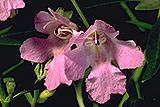|
[Front Page] [Features] [Departments] [Society Home] [Subscribe]

Getting Started 7: Watering
Based on a series of short article aimed at the new grower of Australian native plants. The original series was written by the late Arthur Cooper and appeared in the newsletter "Native Plants for New South Wales" in the early 1970s. It was subsequently updated and reprinted in the same newsletter in 1990-91.
 
Gardeners starting to grow Australian plants have many losses because they have been told that these plants needn't be (even that they "shouldn't be") watered. Many of our local plants are more tolerant of dry conditions than are the imported ones and this is one of their virtues. But not all Australian plants are drought tolerant (eg. rainforest species) and watering shouldn't be neglected for any of them, particularly in the first year after planting out.
Let's start by giving the plant the same sort of conditions under which it does well in nature. If, for instance, you live in Sydney and are growing plants which normally do well in the Sydney bush and the weather is good average Sydney weather, there should be little need to water them. But if we have a dry spell in the summer, so that the plants get less rain water than they would in a good year in the bush, they may be stressed...just as they are in the bush.
If you are growing plants from other climatic regions, study the conditions to which they have become adapted. Regions with dry summers (such as much of the inland and southern areas of western Australia) often have plenty of rain in the winter. Plants from those regions need watering in winter in spring if they are to survive in east coast gardens.
The amount of water that the plants get in nature can be the starting point from which to judge how much you should give them, but many will do better if they have more water than this survival level. This is especially so if you have improved your soil and fed your plants. They will grow bigger, they will have greater leaf area and they will lose more water from their leaves (especially in "good drying" weather).
Get to know the plants in your garden and find out the ones which are the first to show signs of distress when they aren't getting enough water. The "Mint Bushes" (Prostanthera species) are among these "indicator plants". As soon as they start to show signs of wilting, then you must water. If you act quickly the wilting will be temporary and will do no harm to the plant.
 |
Mint bushes are valuable for colour and for indicating dry conditions. This is Prostanthera scutellarioides.
Select the thumbnail image or highlighted name for a higher resolution image (33k).
|
Of course, in most of our cities the demands on the water reticulation systems are steadily increasing and water authorities are moving to implement "user pays". So,, when you must water, do so thoughtfully...otherwise the wallet is likely to suffer serious pain!
Certainly don't do what most suburban gardeners do and walk around the garden with a hose, giving a light sprinkling to each plant. This encourages surface roots which are susceptible to drying out. Give the beds a real soaking, so that the water gets deep into the soil. A sprinkler which scatters the water gently over a large area, so that it soaks in faster than it arrives, will give the best effect. Too concentrated a flow (as often occurs with a hand-held hose) will run off and be wasted. Some thought in placement of sprinklers is needed though, to avoid too much spray falling on impervious surfaces and running off into gutters.
The other mistake often made by suburban gardeners is to water at the wrong time of day. How often have you seen sprinklers operating at midday in the middle of summer? The loss of water to the atmosphere by evaporation is surprisingly high under these conditions. The best time for watering is undoubtedly early in the morning. Watering at night can leave the foliage and soil surface moist and lead to fungal diseases.
 
Even better than sprinklers is trickle irrigation. This takes a bit of time and planning to install and can be quite costly in large areas but it is the most effective way to make sure that water is delivered to the places that it is needed. And the water bill should be a little less frightening. On the minus side...it's easy to forget where the pipe is laid and put a spade through it.....
There are some problem soils which need special treatment. Clay is one. Heavy watering can easily lead to water-logging of the soil which will kill your plants. You must ensure that the drainage is as good as you can make it and then you must water gently so that the water will soak in fast enough to prevent the formation of pools. This is not easy, but the intelligent watering of clay is the secret of success. It can be attained more easily with trickle-watering.
Some sands and sandy loams are also a problem, particularly in hot, dry conditions. When you try to water them the water forms into droplets, runs off and wont soak in. This is a surface tension problem...the soil particles behave like talc, repelling water. On a flat surface heavy watering will overcome this resistance but sloping surfaces are more difficult. The use of a "wetting agent" such as small concentrations of soap or detergent work well...the accent, though, is on the word "small"; we wouldn't want to contribute to pollution of our creeks and rivers. There are also some commercial wetting agents which may be worth considering.

[Front Page] [Features] [Departments] [Society Home] [Subscribe]
Australian Plants online - December 1999
Association of Societies for Growing Australian Plants
|